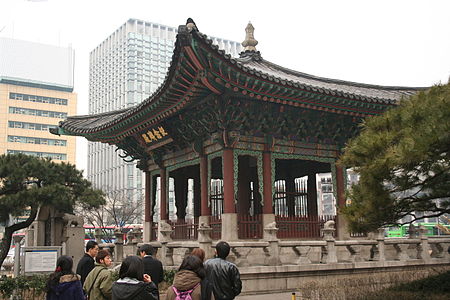Bigak
Buildings and structures in SeoulJongno DistrictPavilionsSouth Korean building and structure stubs

Bigak is a pavilion near Gwanghwamun in central Seoul. The pavilion was built in 1902 to commemorate the 40th anniversary of Emperor Gojong’s coronation and his 50th birthday, as well as the founding in 1897 of the Korean Empire.
Excerpt from the Wikipedia article Bigak (License: CC BY-SA 3.0, Authors, Images).Bigak
Sejong-daero, Seoul Jongno 1·2·3·4(ilisamsa)-ga-dong
Geographical coordinates (GPS) Address Website Nearby Places Show on map
Geographical coordinates (GPS)
| Latitude | Longitude |
|---|---|
| N 37.570555555556 ° | E 126.9775 ° |
Address
고종즉위40년 칭경기념비
Sejong-daero
03154 Seoul, Jongno 1·2·3·4(ilisamsa)-ga-dong
South Korea
Open on Google Maps





